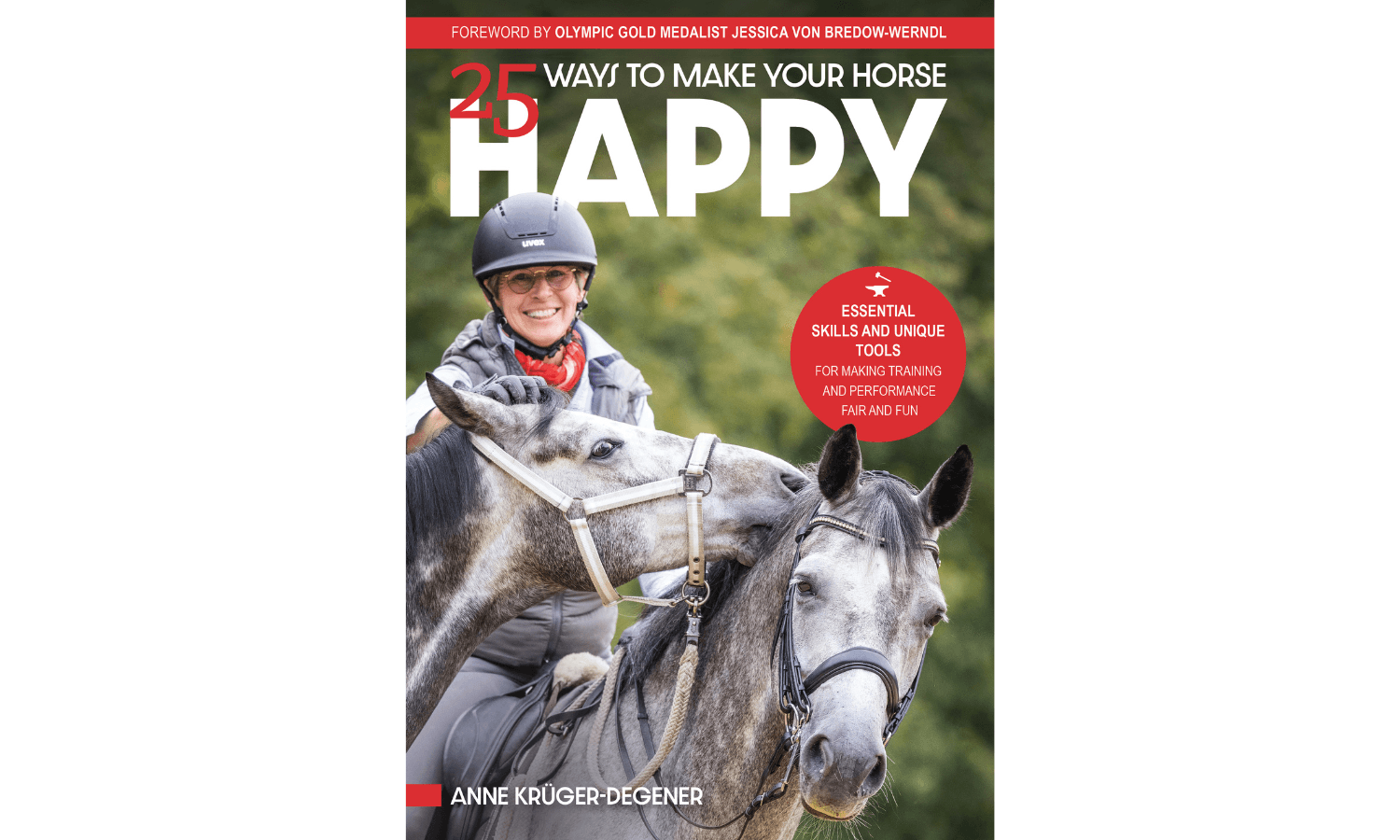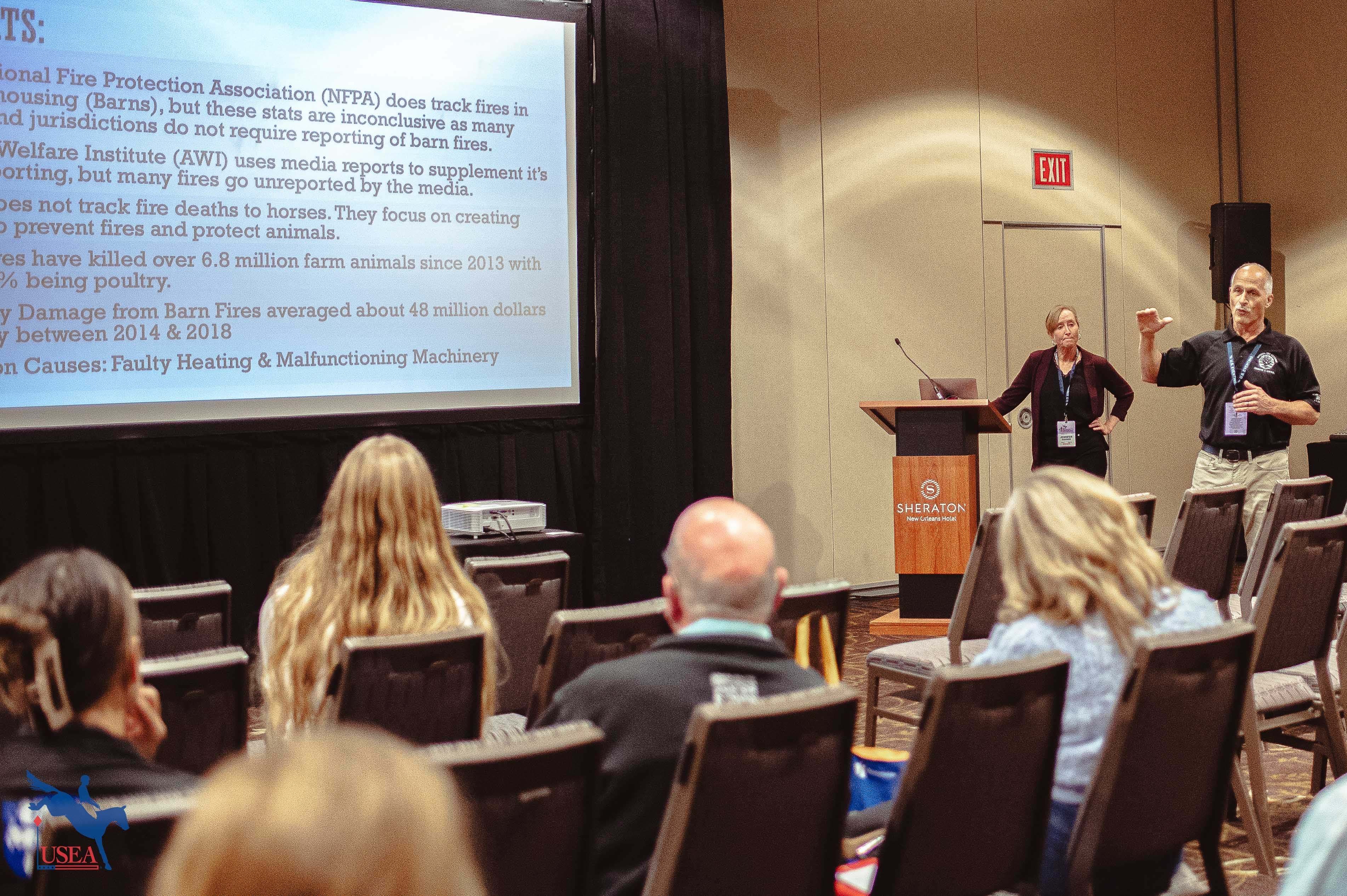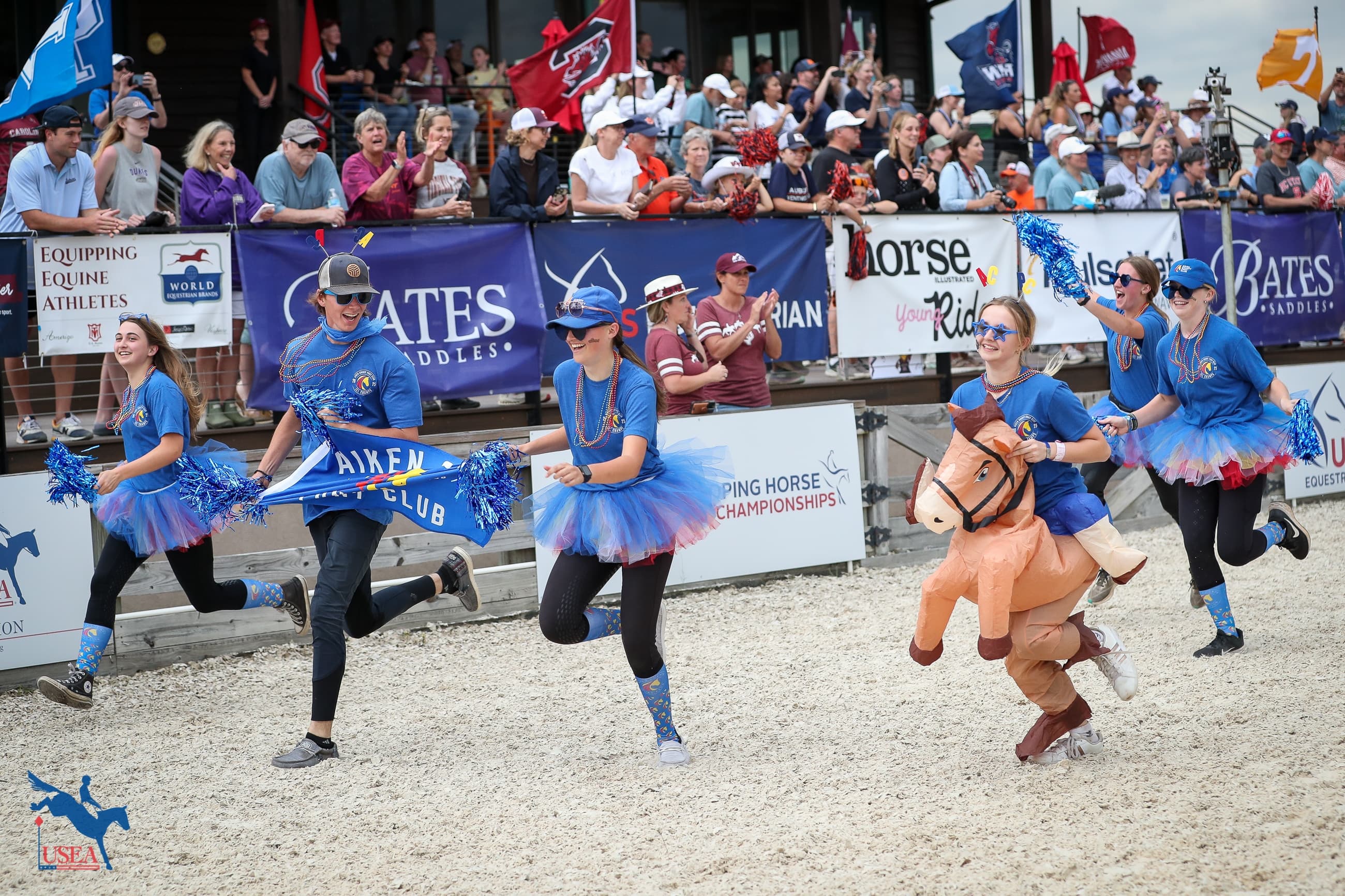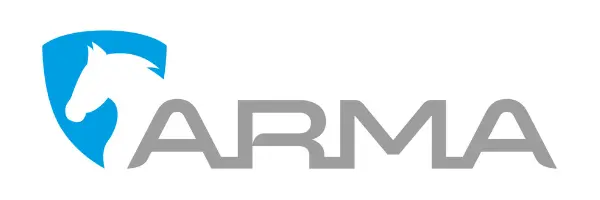25 Ways to Make Your Horse Happy

This excerpt is reprinted with permission from Trafalgar Square Books.
In "25 Ways to Make Your Horse Happy," Anne Krüger-Degener walks readers through clear concrete steps toward forging a strong partnership and clear stream of communication with your horse. Available wherever books are sold from Trafalgar Square Books.
BONDING: BE YOUR HORSE’S SAFE PLACE
Bonding doesn’t win ribbons, but it’s the foundation of trust, and therefore the start to every lesson.
BUILDING A BOND
To develop a bond with your horse, you need to provide him with a few key things:
- Social grooming
- Rituals
- Time
- A satisfying physical workload
- A satisfying mental workload
- Spatial regulation
- Loving attention: a horse can never get enough of this
HOW TO RECOGNIZE A HORSE’S EFFORTS TO BOND
You should give good, direct feedback to your horse if he seeks contact with you, smells you, or asks you for scratches. Pay attention to how often your horse is looking at you or turns his body toward you, and when he is focused on you. Spend time with him in his stall, as well as in his paddock or pasture. Make your interactions with him positive; reward his attention with active praise, and don’t ignore his attempts at contact.
WHAT CAN DISCOURAGE A BOND?
A horse’s willingness to try to form a bond with you can easily be discouraged by defensive, harsh treatment, but can also be affected by frequent upheaval in his living conditions, such as moving to a new farm, a change in handlers (including staff), a change in his herd, or even a change of social partners. Most commonly, however, attachment is subtly chipped away, simply through our failure to respond to a horse’s attempts to bond. If you don’t acknowledge your horse’s efforts to connect, these moments will become quieter and quieter, rarer and rarer, and at some point they disappear completely. There are horses that are easier to bond with, and there are those who are more reluctant to initiate. With these more reserved horses, don’t just accept this as the status quo! Work hard to build a bond.
HOW CAN A DAMAGED BOND BE REPAIRED?
Devote the necessary time to the activities that I am about to describe here. They may seem like small, trivial things, but they’ll help you develop a true bond. Treats can seem like an easy way to “buy” a horse’s affection. Of course, a carrot or apple as a treat can be a great help with a horse that has a hard mouth—it’s useful to get them chewing. But remember that an honest bond, when correctly established, has no draw-backs. Treats can make your horse beg, and you may eventually find yourself negotiating a slippery slope of food as reward, or “pay for work.” This can’t be considered progress in training or bonding, because a demanding horse tends to show a lack of respect for proper boundaries. Consider employing the following methods instead.
PRAISE UNTIL THE PRAISE WORKS
Consider every possible aspect of bonding, and have frequent, consistent contact with your horse. Remember the guiding principle of my system: Praise until the praise works.This alone is the first step towards an honest relationship. Create time and space in which you only work on praise and rewardability—don’t be in a rush, and don’t set any expectations. Just give yourself and your horse some quality time. If someone wonders why you’re spending so much time with your hands deep in his coat, just tell them you’re working on your relationship with him. Be proud of this kind of training, because it’s a direct path to real friendship. Start exercising both your body and your horse’s. All horses need regular exercise. This, too, can build bonds. Healthy riding, communicative longeing, and liberty work all help with bonding. Make a commitment to your horse: stick to a regular schedule, and offer your horse clear, unambiguous communication he can rely on. This creates trust, and is exactly what’s needed for bonding. Attachment training is like caring for a plant: it needs time to grow and regular care. So please don’t expect to cross this step off your training schedule any time soon. You’ll only become a safe place for your horse by spending the necessary time on allowing him to decide that that is what you are.














